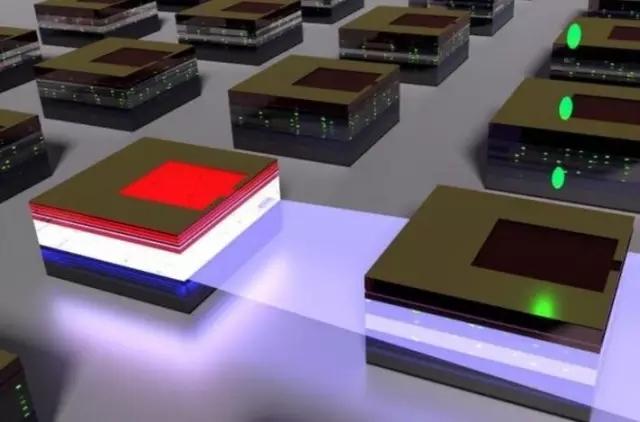
Privacy statement: Your privacy is very important to Us. Our company promises not to disclose your personal information to any external company with out your explicit permission.

Researchers at Cambridge University in the UK published their findings on "Electrically driven and electrically tuneable quantum light sources" in the journal "Applied Physics Letters". Two quantum dot light-emitting diodes (LEDs), which are closely adjacent on a single wafer, exhibit the effect of a tunable, all-electric quantum light source.
In this experiment, the researchers used a light source emitted by an electrically excited LED to excite quantum dots (QDs) of adjacent diodes. They can tune the quantum dot emission wavelengths from adjacent driving diodes through the quantum-limited Stark effect.
The researchers' idea is to generate entangled photon pairs for quantum computing applications via a wafer plane excitation structure that is easy to integrate into semiconductor components and photonic cavities.
In this paper, the researchers show how to generate electrically triggered anti-bundled light from an electrically tunable source.
To this end, the researchers designed 16 individually tunable diode structures on a single wafer. The component consists of a 180 x 210 μm planar microcavity LED containing a layer of indium arsenide (InAs) quantum dots embedded in a 10 nm arsenide ingot (GaAs) quantum well with an Al0.75Ga0.25As barrier layer. .
A multi-distributed Bragg reflector (DBR) grown above and below the InAs quantum dot layer and quantum well for forming a half-wavelength cavity to increase the portion of the vertically-emitting QD source while emitting light from the InAs wetting layer Horizontal waveguide layer. The p-type and the n-type are doped from the top DBR and the bottom DBR, respectively, to form a diode structure suitable for electrical excitation.
The main idea of the researchers is to "use the light generated by the LED to excite quantum dots of adjacent diodes." The LEDs operate with a forward bias, and their broad-band light emission from the InAs wetting layer is horizontally directed by the Bragg mirrors above and below the wetting layer.

When a portion of the emitted light reaches the adjacent LED, some of the light source is absorbed by the wetting layer, generating excitons that can be drawn by the quantum dots in the adjacent diodes, thereby causing quantum light emission.
The element has a p-type doped region (red), an intrinsic region (transparent), and an n-type doped region (blue). An LED emitting source (shown as a blue beam) that is strongly driven by forward bias (left) excites quantum dots (right) in adjacent elements. Quantum dots emit anti-convergence light (green).
Since the cavity mode of the planar microcavity matches the emission wavelength of the adjacent quantum dots, the QD emission ratio up into the collection optics is increased. By changing the bias of the second diode, the tuning wavelength can be shifted by the Stark effect shift, and the light intensity emitted by the adjacent diode can be controlled by changing the voltage of the first diode.

The researchers also demonstrated the ability to tune the exciton fine structure splitting in the second diode as a function of its overall electric field, allowing it to use such elements as a source of entangled photon pairs.
Light emitted from the first diode (1) wetting layer is absorbed by the wetting layer of the adjacent diode, and a quantum light source is emitted after the diode generates charge carriers and is drawn through the quantum dots. Wetting layer emission (left) and quantum dot emission (right) are actual data, while the wetted layer absorption shown is a copy of the transmitted data and is only used to show the operating principle of the component.
In the future, researchers hope to improve the efficiency of components and give more directionality between different diodes. It is possible to use a unidirectional antenna or a waveguide between LEDs to improve the efficiency of cross-coupling. In principle, one drive LED can excite many tunable LEDs.
In combination with the fast electronic component and the low RC constant component, the "pump" can be adjusted by changing the bias of the diode (1), or by changing the bias of the diode (2) to adjust the wavelength. Entangled photons are emitted as needed.

November 04, 2024
November 12, 2024
البريد الإلكتروني لهذا المورد
November 04, 2024
November 12, 2024

Privacy statement: Your privacy is very important to Us. Our company promises not to disclose your personal information to any external company with out your explicit permission.

Fill in more information so that we can get in touch with you faster
Privacy statement: Your privacy is very important to Us. Our company promises not to disclose your personal information to any external company with out your explicit permission.